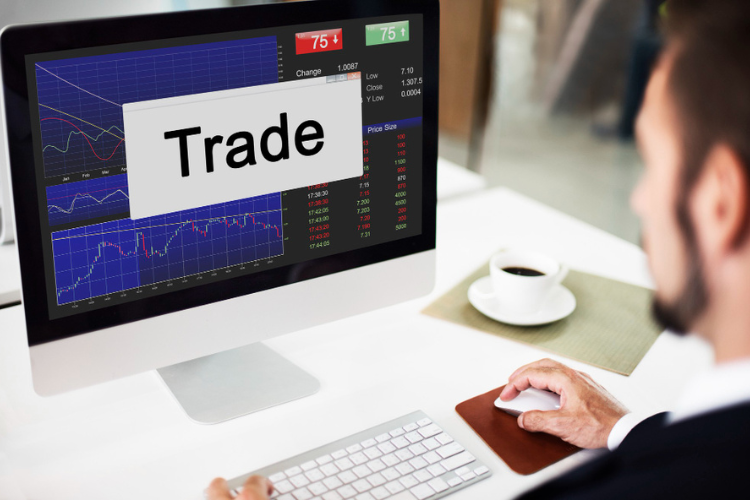How CFD Trading Brings Commodities Into the Digital Age
10 November 2025
5 Mins Read

You feel it at the pump, in the shop, and at the jeweller. Prices move, and traders move with them. CFD trading turns everyday shifts in oil, gold, or grain into real decisions. It’s fast, mobile, and wide open. If you know how to read the signals.
There was a time when trading commodities meant phone calls, spreadsheets, and specialised brokers. These days, it’s all on your screen. Gold, oil, wheat, coffee; name it, and there’s a platform offering you a slice of the action. For many Indian investors, especially those looking to diversify beyond shares, commodities trading through CFDs has become an appealing option. The real shift isn’t in what we trade, but in how we trade it. With modern tools offering access to global commodity markets and zero commission models, CFD trading is no longer niche. It’s quickly becoming part of the standard investor’s toolkit.
The Changing Face of Commodities Access
Most platforms now cover a wide range of commodities, from oil and gold to sugar and coffee. That’s the appeal: you can respond to price movements, take positions quickly, and manage risk across global markets. You’re not buying a barrel of oil, you’re trading on its price. It’s a cleaner, simpler experience for anyone looking to test market sentiment or hedge their portfolio. The best part is how effortless it feels; you log in, analyze the market, and trade. Anyone curious about expanding into global markets can start exploring through CFD trading without worrying about ownership or storage.
The user experience tends to prioritise clarity. Key commodity groups—metals, energy, agriculture, and softs—are often broken down into focused categories, with plain-language explanations and fast market updates. It keeps new users engaged. If you’ve ever followed petrol prices at the pump or checked gold rates during wedding season, you already have a feel for how these markets move. CFD trading simply adds levers to act on that awareness.
Why Indian Traders Are Paying Attention
India’s relationship with commodities runs deep. Families have bought gold for generations, not just as adornment but as security. Farmers track the price of wheat and rice long before those numbers make headlines. Petrol costs are discussed at dinner tables. These prices aren’t distant—they’re personal.
That awareness creates a natural bridge to trading. When oil prices rise due to overseas tensions, it hits home. When wheat prices shift after poor rainfall, it resonates across supply chains. CFD platforms take that lived knowledge and turn it into trading tools.
Accessibility has improved too. Mobile-first platforms with multilingual support have widened the pool. Whether someone is based in a metro or a small town, they can study, trade, and monitor markets through a single app. That reach is shaping a new generation of self-taught investors.
Diversification with Movement
One of the key reasons traders explore commodities is movement. Shares can stagnate. Bonds can feel slow. Commodities respond to the world. They move when crops fail, when oil supply shifts, or when extreme weather disrupts production. That responsiveness gives traders something to work with.
Commodities also add balance. When equities dip, gold often rises. When inflation eats into purchasing power, hard assets hold up better. CFDs allow traders to use this dynamic actively. You’re not stuck in one asset class. You can tilt toward metals this week, then switch to softs or energy depending on what’s happening globally.
That ability to adapt turns commodities into a tool, not just a theme. They can support a long-term plan or provide short-term momentum depending on your strategy.
Risk Lives Here Too
Of course, speed cuts both ways. Commodity prices can swing hard. A sugar crop might be overestimated. A pipeline could shut down unexpectedly. These events affect price quickly. For CFD traders, that creates opportunity, but also risk. A few points the wrong way can wipe out gains.
That’s why serious traders rely on dashboards, alerts, and research tools. The goal isn’t to automate judgement—it’s to stay in control. Whether it’s margin notifications or watchlist filters, the tech supports the process, but the decision-making still sits with the user.
Newer traders often jump in too fast. A better approach is to follow one sector at a time, set a budget, and use basic indicators before every move. Discipline builds survival. The ones who last are the ones who protect their balance before chasing rewards.
What Commodities Offer That Stocks Don’t
Every asset class moves for different reasons. Stocks react to earnings. Bonds track inflation and policy. Crypto swings on headlines. Commodities? They move when people build, ship, grow, or consume. That direct link to the physical world gives them a different kind of logic.
You don’t need to decode a company balance sheet to understand why copper is rising. You just need to know construction is booming. You don’t need an MBA to grasp coffee volatility during harvest season. That accessibility makes commodities appealing to a broader pool of traders.
The emotional angle matters too. When you trade wheat or gold, you’re often trading something you’ve seen, touched, or bought. That familiarity adds confidence, especially for first-time users trying to feel their way around fast-moving charts.
Designed for Portability
The modern trader doesn’t sit at a desk all day. They trade from trains, cafés, and airports. Platforms that prioritise clean interfaces, real-time data, and smooth mobile performance are the ones seeing growth. Being able to trade on a lunch break or check trends on the go is part of the draw.
Notifications help keep track of global shifts without being glued to the screen. Energy report? Alert. Weather disruption? Alert. A good platform doesn’t drown you in data—it nudges you when it matters. That balance is key for casual traders who want to stay informed but not overwhelmed.
Final Thoughts
CFD trading in commodities doesn’t try to replace traditional investing. It opens the door to something different. It offers movement, realism, and daily relevance. It brings global markets closer without demanding years of experience.
Whether it’s oil, rice, copper, or cocoa, the same lesson applies: someone, somewhere, needs it. The price moves accordingly. When you trade CFDs, you’re not just watching that process. You’re participating in it.

















